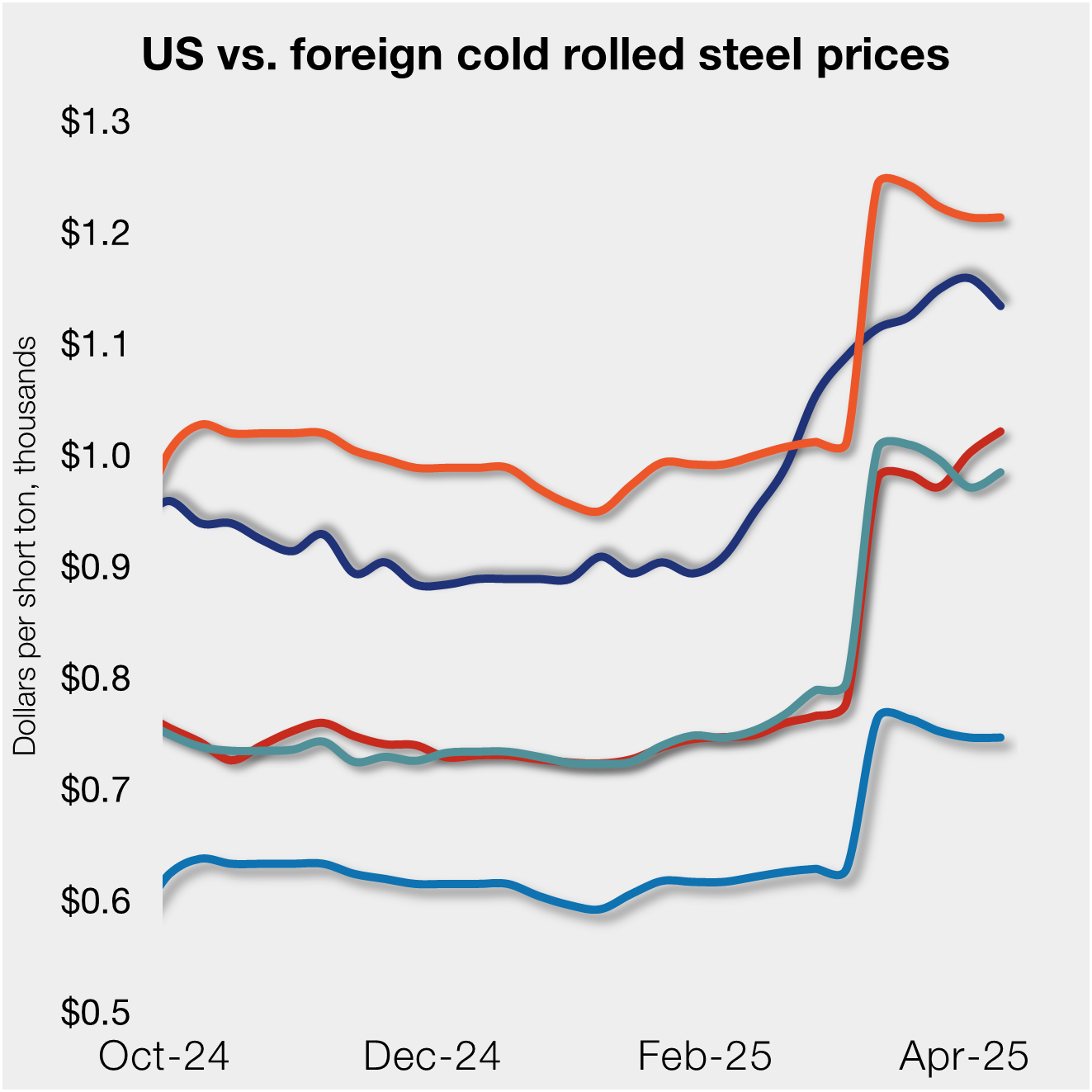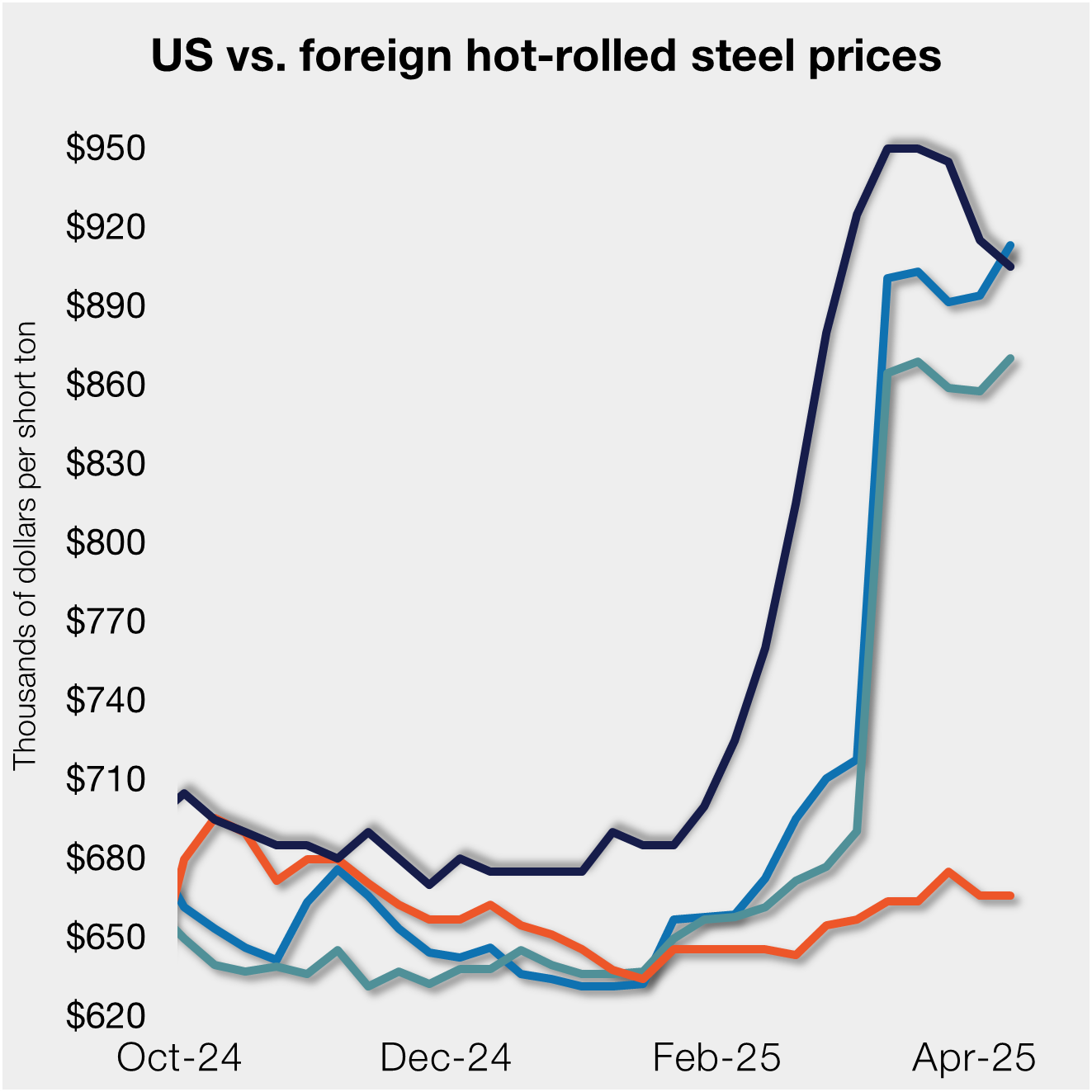Steel Products
SMU Price Momentum Indicator Remains at Neutral for 10th Week
Written by John Packard
February 6, 2013
Even as prices “firm” a bit from where they were one week ago, our SMU Price Momentum Indicator remains stuck in Neutral for the 10th consecutive week due to the following factors.
We always prefer to give the domestic mills an opportunity to sell their price increases into the marketplace, so we automatically move to a neutral rating when the mills announce a price increase until such time it is obvious they have succeeded in moving prices higher or have failed to do so.
Other key factors which impact the SMU Price Momentum Indicator are lead times, negotiations between the domestic mills and their customers, scrap pricing and any changes in spot prices out of the service centers to their end customers and the amount of imports coming into the country at this time (and new offers).
Scrap prices are falling which is a negative for the domestic mills being able to collect all of their price increase (and move prices higher from here). On average, scrap prices are down close to $20 per gross ton in the Midwest and Southern markets and slightly less in the Eastern markets.
Lead times – SMU is seeing some modest changes (improvements) but they are not across the board (at all mills) and we are still receiving anecdotal insights about mills producing orders early. Benchmark hot rolled lead times are running 2-5 weeks which is about the same as they have been for the past few weeks. We did notice Nucor Berkeley lead times move out on their HSM over the past few days from one week to 2-2.5 weeks. On the coated side we are seeing galvanized lead times out of two conversion mills in mid-March which is approximately 5 weeks – a relatively short lead time for coated. Automotive mill lead times should be much further out and should not be used an indicator of the spot market.
Imports – SMU understands new import offers are not necessarily attractive unless they are “niche” items and even then the domestic mills will many times provide “foreign fighter” pricing to prevent those imports from taking domestic market share.
In a conversation with a service center today we were advised light gauge galvanized prices out of China and India were up $15 per ton since December – however, the prices were up $90 per ton since October. Another company advised SMU late last week that they were unable to find “reasonable” foreign prices for a fairly large order they wished to place. Something that had not been an issue in the past.
January 2013 license data is showing total imports of 2,629,000 net tons which would be lower than last January when imports totaled 2,814,000 net tons – or about 6 percent lower this year than last. However, hot rolled will be about the same as last year while cold rolled will be only slightly lower (call it a push). Galvanized imports are much higher with almost 200,000 net tons this year versus the 121,151 net tons received last January. Galvalume imports should be down slightly this January versus where they were last year.
SMU is also watching service center spot prices – an item which we have learned to appreciate over the years as a leading indicator for steel mill price increases and for those increases which are best positioned to stick. Service centers, and how they react within the spot market, are also important barometers as to how well management of those companies believes in the ability of the domestic mills to collect price increases (thus forcing them to pass those increases through to their customers).
At this time the SMU Price Momentum Indicator is at Neutral…for the tenth week in a row. When we first changed to Neutral back on November 27th our SMU HRC price range was $620-$660 per ton.

John Packard
Read more from John PackardLatest in Steel Products

SMU flat-rolled market survey results now available
SMU’s latest steel buyers market survey results are now available on our website to all premium members. After logging in at steelmarketupdate.com, visit the pricing and analysis tab and look under the “survey results” section for “latest survey results.” Past survey results are also available under that selection. If you need help accessing the survey results, or if […]

CRU tariff webinar replay now available
CRU’s latest webinar replay on how Trump’s tariffs affect the global steel market is now available on our website to all members. After logging in at steelmarketupdate.com, visit the community tab and look under the “previous webinars” section of the dropdown menu. You’ll find not only this special CRU webinar but also all past Community […]

US, offshore CRC prices diverge
US cold-rolled (CR) coil prices declined this week, slipping for the first time since early February. Most offshore markets deviated, moving higher this week.

Construction growth slowed in March on tariff woes: Dodge
The decline comes after reaching a record high in January to kickstart the year.

Return of S232 zapped gap between US and EU HR prices, Asian HR remains cheaper
Domestic hot-rolled (HR) coil prices declined this week for a third straight week. Most offshore markets bucked the trend and gained ground. Uncertainty in the US market around tariffs, especially after “Liberation Day,” caused US prices to slip as buyers moved to the sidelines. It’s unclear to date whether the 90-day pause on the more […]
